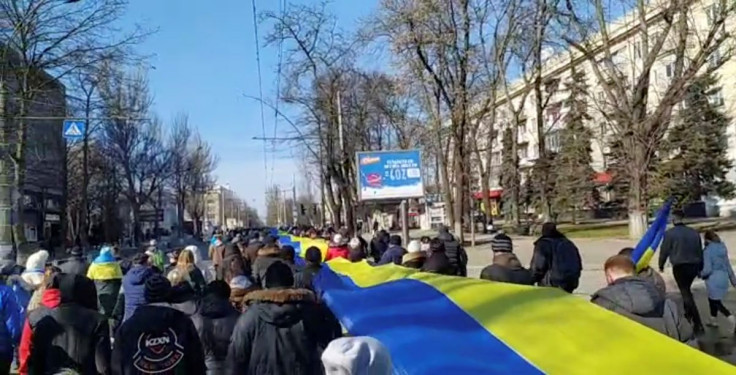Social Media Used To Aid Ukraine During Russian Offensive

Social media has become an active tool governments use in modern warfare and soft power construction. During Russia's invasion, Ukraine has used social media to influence the local and international narrative of the conflict.
Dubbed "The First TikTok War" by The New Yorker, Ukrainians have been filling social media with videos and photos since Russian troops invaded on Feb. 24. Social media is being utilized to attract global support, including financial aid and military donations.
The BBC reported earlier this year that the Ukrainian Defense Ministry has volunteer groups of social media teams to create content targeting international audiences to share updates on the war, commonly with memes or short videos set to music.
As Ukrainian President Volodymyr Zelensky formats his speeches to appeal to the pathos of the nation, he is addressing, the team of social media gurus styles his speeches to better appeal to those audiences. Speeches directed to the UK, for example, with have classic British rock in the background, and videos directed to France will focus on romantic images of Parisian life.
The Ukrainian Defense Ministry has over 1.6 million Twitter followers, and some of its videos have millions of views.
Friends will be friends
— Defense of Ukraine (@DefenceU) June 22, 2022
When you're in need of love they give you care and attention
Friends will be friends
When you're through with life and all hope is lost
Hold out your hand 'cause friends will be friends
Right till the end.
Thank you, UK!@BWallaceMP @BorisJohnson pic.twitter.com/p9gAnLIs9X
Zelensky tweets regularly and posts evening video updates. He has 6.9 million followers on Twitter, and the only other account he follows is that of his wife, Olena Zelenska. He tweets in English, Ukrainian and Russian and posts cinematically edited videos, thanking his supporters ranging from governments to international celebrities.
In 6 months, @u24_gov_ua united hundreds of thousands of people from all over the world in helping 🇺🇦. We are grateful to everyone for supporting our values, for believing in 🇺🇦 and our victory. We feel that the world is supporting 🇺🇦, and this gives us strength in our struggle. pic.twitter.com/gNj0ZeCjmz
— Володимир Зеленський (@ZelenskyyUa) November 5, 2022
International journalists that have converged on Ukraine since the war began in February have been using social media as a primary way to update audiences on the offensive in real-time. New York Times journalist Lynsey Addario captured the moment a Ukrainian family of three and their guide were killed by Russian shelling. Addario posted the now-famous photo of the four bodies on the curb. Addario's photos were later used as proof of Russian forces targeting civilians.
Indeed. And this is minutes later. Video by @FrontlinerUA (pardon my language.) https://t.co/mVMp4ZQq4K pic.twitter.com/edVsCOamti
— lynsey addario (@lynseyaddario) August 26, 2022
Some Ukrainian civilians are using their platforms to gain attention to the war and keep it relevant. A Ukrainian woman named Valeria Shashenok has uploaded videos daily to TikTok about her life in Kyiv during the offensive. Her posts include English messages and videos.
On Wednesday, she published a TikTok that went through a house destroyed by Russian shelling. The video had the caption, "Innocent people were killed there... #ukraine #russiastopthewarputin." The music playing over the video is an acoustic speed-up version of a pop love song.
@valerisssh Innocent people were killed there… #ukraine #russiastopthewarputin
♬ som original - crz
Some of her posts have reached over a million views, with her popular post videos getting over 5 million. In October she posted a video titled "pov: you try to live your simple life during the war," which now has 3.5 million views.
@valerisssh I don’t know how to explain..
♬ American Beauty - Thomas Newman
Ukrainian First Lady Zelenska has been publicly asking social media companies to stop censoring videos that have come out of Ukraine so that the international public can see more of what is happening in the country. At a web summit in Lisbon, Portugal, last week, Zelenska asked the audience of web developers to invest in technology and resources that support humanitarian aid.
"I believe that technology should be used to create and to save and help people, not to destroy," Zelenska said, "I believe that such technology is the future. If it's not, there simply won't be a future to look forward to."
© Copyright IBTimes 2025. All rights reserved.





















